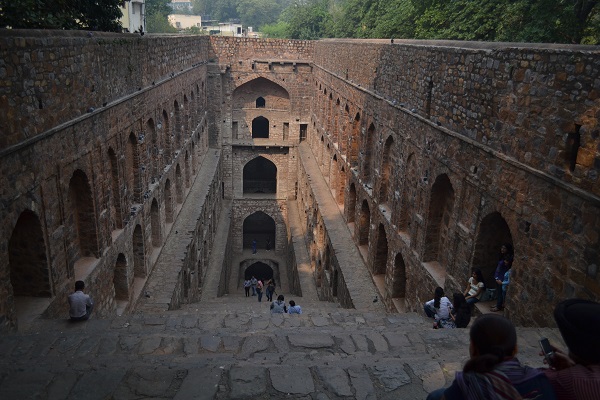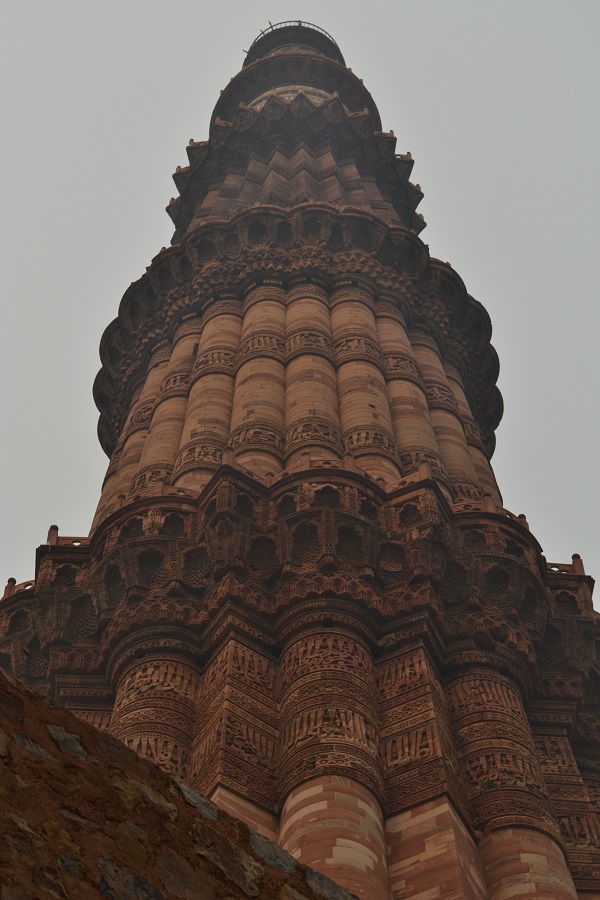Come on, as we decided to name our personal travel experience sharing website “induscarte” meaning the map of India, let’s start the talk with Delhi – being New Delhi the national capital.
Like any other place that we’ll eventually talk on in this site, this piece on Delhi also has very personal ground. Hence we’re no way trying to give you exclusive information, but sharing our feelings.
Delhi – there are seven cities of Delhi historically. Meaning seven times Delhi has been destroyed and re-established by another new ruler. Probably a maximum number when compared to any other Indian city.
Now, after each political overhauling, something remained from the previous era. Seven times. And today’s Delhi has become the open museum of history and antiquity.
Here are some places, known to many at various degrees, we are feeling to talk about.
Agrasen ki Bavli

Agrasen ki Bawli
This is tucked somewhere in Connaught Place. At present posh Delhi concretes are surrounding it. You may even find it difficult to make an auto driver understand where really you want to go. We guided our auto using Google map as we went before the release of the Hindi movie PK. Now you can refer PK to auto driver to reach this hideout.
A bavli or baoli is a step well. A long flight of stairs goes deep under the ground level till the reach of water. A multi storied construction with arched corridors on each floor surrounds the well. Each floor can be accessed from various passages. Water level may go up and down making different floors closer to water. Entire construction is guarded with high walls.
Bavlis were mainly meant for women folks for their water activities. When water comes up to some upper level, it’s even possible to swim in the well.
Few guide books and sites talked about Agrasen ki bavli. Hence getting a comfortable review was quite difficult. What attracted us was statements in some article that Agrasen being the first man in Agrawal clan. We just gave it a chance. And it became superb.
After you enter the premises, protected by ASI, but no entry fees, you are suddenly cut off from the chaotic noise of the city. You may even feel the air has less pollution here. You can roam through the presently accessible corridors, or go up and down the steps. There is no water at the bottom of the well now. The bottom chamber has some wet sandy soil and a lot of bats overhead.
Otherwise, the best, you simply sit on the steps and contemplate. It’s serene. It’s cool.
Some associate supernatural activities with this place, we never felt any.
Humayun’s Tomb

Humayon’s Tomb_New Delhi
Everybody knows about this monument. Everybody goes there. But we got stuck by it. Which criteria of this place made us spellbound is not clear even to us, but when we visited we felt to be in completely in our own space.
Some say Humayun’s tomb is prequel of Taj Mahal. We never felt in that way. Taj Mahal is only glamour – and a lot of it. Whereas Humayun’s tomb is a place to sit quietly, look within one’s self and contemplate. Far more serene, far more close to heart. The only other place come to mind that offers similar feeling is Sikandara – Akbar’s Tomb.
Matter to remember here is Humayun’s tomb was built by Akbar, who had a great sense of architecture – recall Fatehpur Sikri if you’ve been (else put it in your bucket list). So this mausoleum depicts peace – whereas Fatehpur Sikri depicts grandeur.
Red sand stone is used here. The material gives a terracotta look which is soothing to eyes amidst a lush green garden that surrounds the tomb. If you go there during monsoon on a drizzling day, the freshness of the stone is overpowering.
I heard that in Humayun’s tomb there lies the unmarked grave of Dara Shikoh. Unmarked as it is, so none can ever find it, but it’s beautiful to think yes it is there, somewhere in the numerous unmarked graves inside the complex.
A typical Persian garden holds the tomb in the center – typicality for many other Mughal mausoleums.
Qutub Minar Complex

Qutub Minar
There will be nobody who visited Delhi and didn’t head for Qutub Minar. Let’s talk on some open-in-plain-sight but overlooked things about this internationally famed site.
Qutub minar looks taller than its actual height. Why? How? – The angle of ascent is a big one. Means, the tower does not tapper very gradually – instead it tapper with a higher rate. Thus when you see it from its base, it looks taller. Factually Taj Mahal is taller than Qutub minar, but never looks so.
Then there is the incomplete Alai Minar. Alauddin Khilji started making it but could never complete in his life time and there was nobody to really put mind to proceed with this project after the former ruler. Alauddin wanted to go for a tower double the height of Qutub. So the base of the Alai minar is far bigger than that of Qutub. It had been constructed till a few floors also. But if you observe it closely, the tower look little inclined already. This means Alai minar could never reach its completion and would have toppled long before finishing even though the project was carried out farther.
And finally there is that iron pillar which never rusts.
Here we’ll tell you, please don’t miss the mosque in the complex. And don’t miss its stone jali work on the walls. A mehendi designer will be happy if they can recreate the patterns of jalis on someone’s palm.
Qutub complex has been a subject of continuous research among various educational fields. It’s grand. It’s beautiful. It’s curiosity provoking.